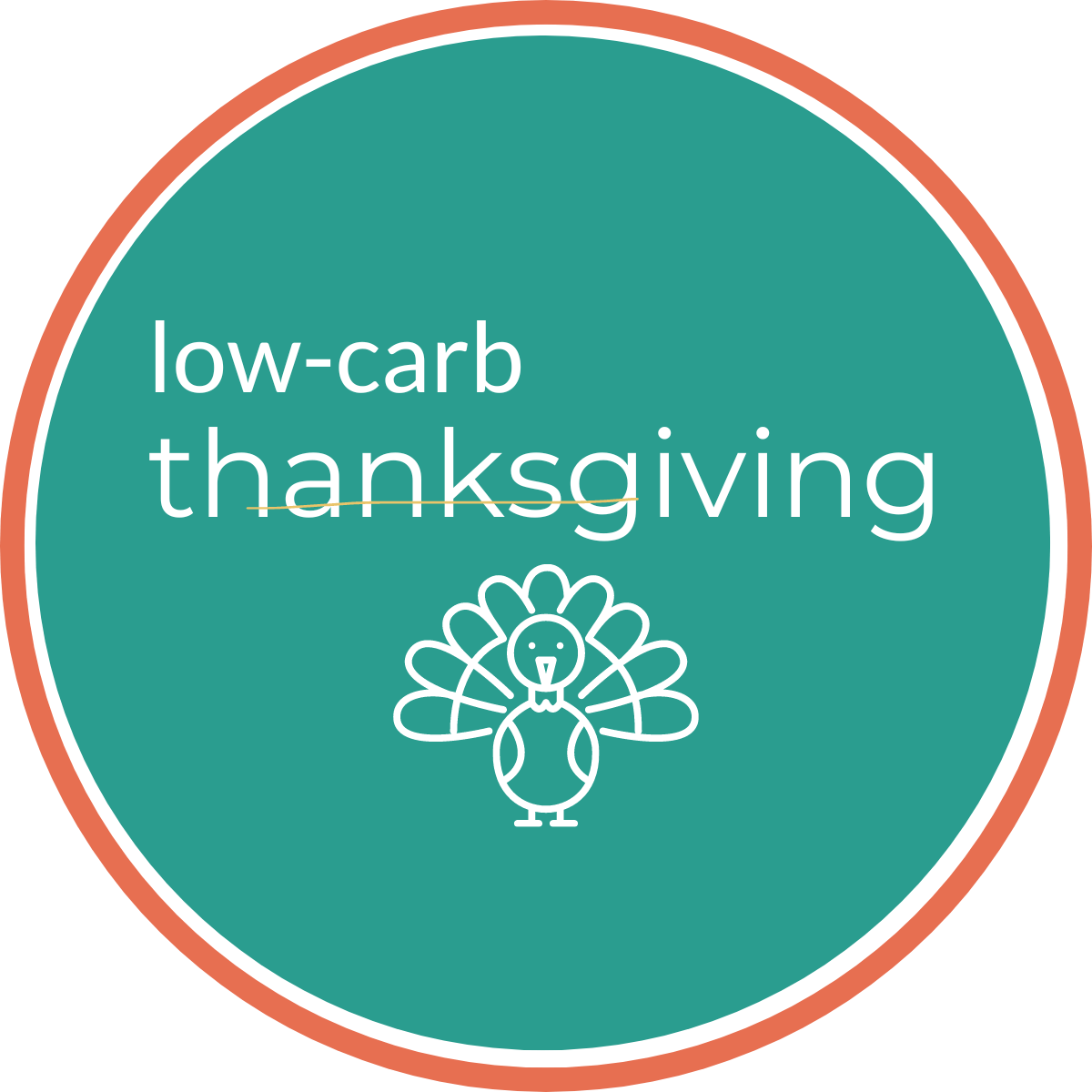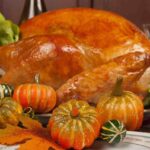The holidays: a whirlwind of festive gatherings, delectable treats, and…temptation. For those committed to a low-carb lifestyle, navigating this season can feel like a culinary tightrope walk. But fear not, fellow carb-conscious celebrators! This guide unveils strategies, recipes, and tips to help you savor the season’s joys without derailing your dietary goals. Imagine a Thanksgiving feast brimming with flavor, a Christmas cookie swap featuring low-carb delights, and New Year’s Eve celebrations where you feel confident and energized, all while staying true to your low-carb commitment. Prepare to discover a holiday season that’s both delicious and guilt-free.
We’ll explore detailed meal planning, creative recipe adaptations of holiday classics, smart strategies for navigating social events, and techniques for managing stress and cravings. From crafting a low-carb Thanksgiving dinner shopping list to mastering the art of politely declining high-carb offerings, this guide provides a comprehensive roadmap to a successful low-carb holiday season. Get ready to embrace the festive spirit with renewed confidence and a renewed commitment to your health goals.
Low-Carb Holiday Meal Planning
Navigating the holiday season while adhering to a low-carb diet requires careful planning and creative substitutions. This section provides practical strategies and examples to help you enjoy the festivities without derailing your dietary goals. Remember, the key is focusing on nutrient-dense, low-carb options while still embracing the spirit of celebration.
A Sample 7-Day Low-Carb Holiday Meal Plan
A well-structured meal plan is crucial for maintaining a low-carb approach throughout the week. This sample plan provides a variety of delicious and satisfying options, showcasing the versatility of low-carb cooking.
- Day 1:
- Breakfast: Scrambled eggs with spinach and feta cheese.
- Lunch: Large salad with grilled chicken or salmon, avocado, and a vinaigrette dressing.
- Dinner: Roasted cauliflower “steak” with garlic herb butter and green beans.
- Day 2:
- Breakfast: Chia seed pudding with unsweetened almond milk and berries (limit portion size).
- Lunch: Leftover roasted cauliflower steak and green beans.
- Dinner: Pork chops with asparagus and a side of zucchini noodles.
- Day 3:
- Breakfast: Bulletproof coffee (coffee with butter and MCT oil).
- Lunch: Tuna salad (made with mayonnaise) lettuce wraps.
- Dinner: Salmon baked with lemon and dill, served with a side salad.
- Day 4:
- Breakfast: Coconut yogurt with a sprinkle of nuts.
- Lunch: Leftover salmon and salad.
- Dinner: Chicken stir-fry with cauliflower rice and plenty of low-carb vegetables.
- Day 5:
- Breakfast: Omelet with mushrooms and cheese.
- Lunch: Celery sticks with cream cheese and almond butter.
- Dinner: Steak with broccoli and a side of green beans.
- Day 6:
- Breakfast: Avocado toast (using almond flour bread).
- Lunch: Leftover steak and broccoli.
- Dinner: Shrimp scampi with zucchini noodles.
- Day 7:
- Breakfast: Bacon and eggs.
- Lunch: Salad with leftover shrimp scampi.
- Dinner: Roasted chicken with Brussels sprouts and a side salad.
A Low-Carb Holiday Menu Catering to Dietary Restrictions
This menu offers options to accommodate various dietary needs, ensuring everyone can enjoy a delicious and inclusive holiday meal.
| Meal | Description | Ingredients | Dietary Notes |
|---|---|---|---|
| Appetizer | Deviled Eggs | Eggs, mayonnaise, mustard, celery, onion | Gluten-free, can be made vegetarian |
| Main Course | Roasted Turkey Breast | Turkey breast, herbs, spices | Gluten-free |
| Main Course (Vegetarian) | Stuffed Butternut Squash | Butternut squash, wild rice, cranberries, pecans, herbs | Vegetarian, Gluten-free |
| Side Dish | Green Bean Casserole (Low-Carb Version) | Green beans, cream of mushroom soup (low-carb), fried onions (low-carb) | Gluten-free (check soup and onion labels) |
| Side Dish | Cauliflower Mash | Cauliflower, butter, cream, garlic, herbs | Gluten-free, dairy-free option available |
| Dessert | Sugar-Free Pumpkin Pie (made with almond flour crust) | Pumpkin puree, eggs, spices, sweetener (e.g., erythritol), almond flour | Gluten-free |
Low-Carb Thanksgiving Dinner Shopping List
A detailed shopping list helps ensure you have all the necessary ingredients for a successful low-carb Thanksgiving feast.
- Produce: Turkey, butternut squash, Brussels sprouts, green beans, celery, onions, garlic, lemons, herbs (rosemary, thyme, sage).
- Dairy & Refrigerated: Eggs, butter, cream, cream cheese, mayonnaise, heavy cream (for cauliflower mash).
- Pantry: Almond flour (for pie crust), spices (salt, pepper, nutmeg, cinnamon, etc.), low-carb sweetener (erythritol or similar), low-carb cream of mushroom soup (check labels carefully), low-carb fried onions (check labels carefully), pecans (optional).
Low-Carb Holiday Recipe Adaptations

Transforming beloved holiday classics into low-carb delights requires clever substitutions and mindful cooking techniques. This allows you to enjoy the festive flavors without sacrificing your dietary goals. By swapping out high-carbohydrate ingredients for their low-carb counterparts, you can maintain a satisfying and delicious holiday experience.
Low-Carb Alternatives for Classic Holiday Dishes
This section details three classic holiday recipes and their low-carb adaptations, highlighting the ingredient swaps and cooking method adjustments necessary for a delicious and satisfying low-carb meal.
Mashed Potatoes: Traditional mashed potatoes rely heavily on starchy potatoes. A low-carb alternative uses cauliflower as a base. Imagine a creamy, fluffy mash, strikingly similar in texture to the original, yet significantly lower in carbohydrates. To achieve this, steam or boil cauliflower florets until tender. Then, puree them with butter, cream cheese, salt, pepper, and a touch of garlic powder for flavor. The result is a light and airy dish, a perfect substitute that won’t disappoint.
Stuffing: Traditional stuffing often features bread as its primary ingredient. For a low-carb version, replace bread with finely chopped vegetables such as celery, onions, and mushrooms. Sauté these aromatics until softened, then combine them with ground sausage or chicken, herbs (sage, thyme, rosemary), and a touch of broth. The resulting stuffing is flavorful and hearty, offering a satisfying texture without the high carbohydrate content of bread-based stuffing. Imagine a vibrant mixture of colors and textures, with the savory aroma of herbs and sausage filling the air.
Pie Crust: Traditional pie crusts use all-purpose flour, a significant source of carbohydrates. A low-carb alternative uses almond flour or coconut flour as a base. These flours create a slightly crumbly but still delicious crust. The process involves combining the flour with butter or coconut oil, an egg, and a touch of sweetener (such as erythritol or stevia) to bind the ingredients. The resulting crust is a beautiful golden brown, with a delicate, slightly nutty flavor that complements various fillings.
Low-Carb Pumpkin Pie
This section details a step-by-step guide to making a delicious low-carb pumpkin pie.
Step 1: Prepare the Crust: Combine 1 ½ cups almond flour, ¼ cup melted coconut oil, 2 tablespoons erythritol, and a pinch of salt. Mix until a crumbly dough forms. Press the dough into a pie dish, creating an even crust. The dough will have a pale, slightly oily appearance.
Step 2: Make the Filling: In a separate bowl, whisk together 1 (15-ounce) can of pumpkin puree, 2 large eggs, ½ cup heavy cream, ¼ cup erythritol, 1 teaspoon pumpkin pie spice, and ½ teaspoon vanilla extract. The batter is a light golden color, smooth and pourable.
Step 3: Bake the Pie: Pour the pumpkin filling into the prepared crust. Bake in a preheated oven at 350°F (175°C) for 45-50 minutes, or until a knife inserted into the center comes out clean. The finished pie has a deep golden-brown crust and a creamy, slightly firm filling. The aroma of warm pumpkin and spices fills the kitchen.
Nutritional Comparison of Traditional and Low-Carb Holiday Dishes
The following table compares the nutritional profiles of traditional and low-carb versions of popular holiday dishes. Note that these are approximate values and can vary depending on specific recipes and ingredients.
| Dish | Traditional | Low-Carb | Nutritional Difference |
|---|---|---|---|
| Mashed Potatoes | High in carbohydrates, moderate in fat | Low in carbohydrates, moderate in fat | Significantly reduced carbohydrates, similar fat content |
| Stuffing | High in carbohydrates, moderate in fat and protein | Low in carbohydrates, moderate in fat and protein | Significantly reduced carbohydrates, similar fat and protein content |
| Pie Crust | High in carbohydrates, moderate in fat | Low in carbohydrates, high in fat | Significantly reduced carbohydrates, increased fat content |
| Pumpkin Pie | High in carbohydrates and sugar, moderate in fat | Low in carbohydrates and sugar, high in fat | Significantly reduced carbohydrates and sugar, increased fat content |
This holiday season, you don’t have to choose between tradition and your low-carb lifestyle. By implementing the meal planning techniques, recipe adaptations, and social strategies Artikeld in this guide, you can enjoy the festive spirit while maintaining your dietary goals. Remember, mindful eating, strategic planning, and a touch of creativity are your secret weapons for a healthy and happy holiday season. Embrace the delicious possibilities, savor every moment, and celebrate with confidence, knowing you’re in control of your choices and your well-being. This holiday season, let your low-carb journey be a celebration of health, happiness, and mindful indulgence.
Common Queries
What are some good low-carb substitutes for common holiday side dishes?
Cauliflower mash can replace mashed potatoes, roasted Brussels sprouts offer a delicious alternative to green bean casserole, and a simple salad with a vinaigrette dressing makes a refreshing and low-carb side.
How can I avoid overeating at holiday buffets?
Fill your plate with low-carb options first, and take smaller portions. Focus on savoring each bite rather than mindlessly eating. Remember you can always go back for more if you’re still hungry.
What if I accidentally consume more carbs than planned?
Don’t beat yourself up! One day of higher carb intake won’t derail your progress. Simply get back on track with your low-carb eating plan the next day. Focus on your overall progress, not just a single meal or day.
Are there any low-carb alcoholic beverages I can enjoy?
Yes, many liquors such as vodka, whiskey, tequila, and rum are low in carbs. Mix them with unsweetened drinks like sparkling water or diet soda to create festive cocktails.


